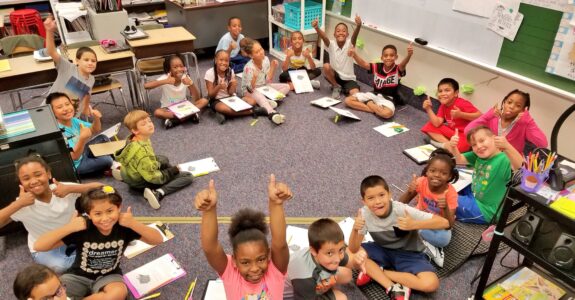Claire Fiddian-Green is the President & CEO of the Richard M. Fairbanks Foundation.
The horrific death of George Floyd and resulting protests in our city and across the nation have once again brought to the forefront longstanding and deeply troubling issues of racism and racial inequality. The personal stories we have heard from people who routinely face discrimination for no reason other than the color of their skin are profoundly disturbing.
We all have an obligation to take meaningful action to build a more just society, especially for our Black and Brown neighbors. This includes identifying and addressing the ways in which racism is perpetuated in our own communities, not only through our criminal justice system, but also within our health and education systems. For many years, the Richard M. Fairbanks Foundation has funded initiatives aimed at addressing inequities, primarily within our Health and Education focus areas. Two months ago, the Foundation announced its funding priorities for the period 2020 through 2024. With our new funding priorities, we have made an explicit statement that special consideration will be given to grant initiatives that target both racial and socio-economic disparities.
Disparities in education
One area where disparities persist is K-12 academic outcomes. Last year’s ILEARN results for Grades 3-8, for example, show that only 15% of Black students in Indiana demonstrated proficiency in both Math and English/Language Arts (ELA) compared to 43% of white students. Only 23% of students from low-income families were proficient in Math and ELA versus an overall passing rate of 37%. These disparities in academic outcomes are the result of years of inequitable access to resources and opportunity, oftentimes determined by a student’s skin color or zip code.
In addition to the disproportionate impact of COVID-19 on the health of Black Americans, the sudden overnight shift to remote learning has placed some students, in particular Black and Hispanic/Latino and students from low-income families, at even greater risk when it comes to their learning outcomes. In Marion County, 25% of public school students lack access to high-speed internet service due to family economic circumstances. Lack of internet access while being required to socially distance makes it nearly impossible for these students to participate in e-learning. At the MSD of Lawrence Township, for example, where 78% of students are Black, Hispanic/Latino, or Multiracial and 64% of students are from low-income families, an estimated 3,000 students lack internet access. At 印第安纳波利斯公立学校, 78% of students are Black, Hispanic/Latino, or Multiracial, 66% of students are from low-income families, and an estimated 10,000 students lack internet access.
As schools plan for a safe reopening for the 2020-2021 school year, it is likely that a hybrid combination of in-school and e-learning will be required for the duration of the next year in order to support effective social distancing. Solving the internet connectivity gap in Marion County is critically important to ensuring all students, regardless of race or income, have the resources and opportunities necessary to succeed in school and beyond.
Tagged in: Claire Fiddian-Green, COVID-19, 教育, Improving Education Outcomes, 印第安纳波利斯公立学校, K-12, 理查德·费尔班克斯基金会, RMFF, STEM


